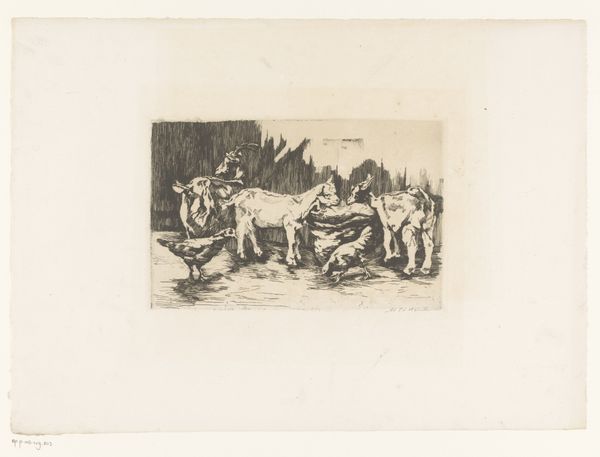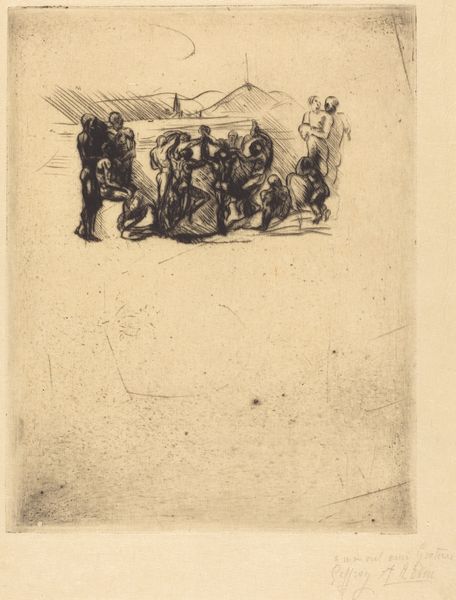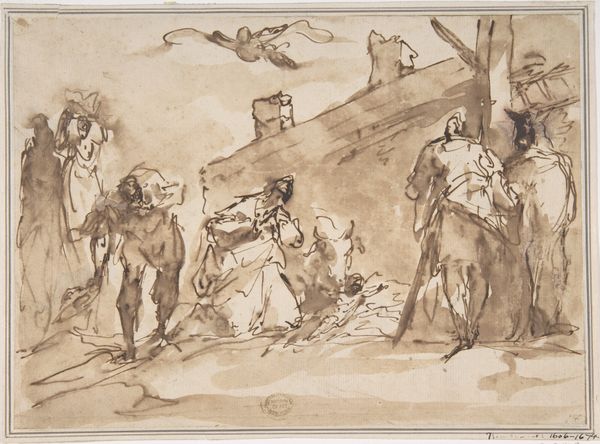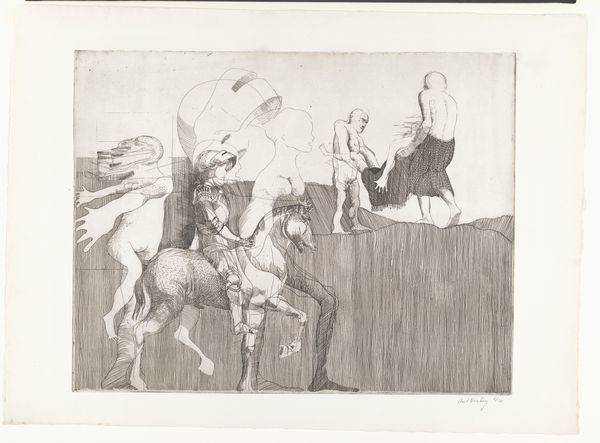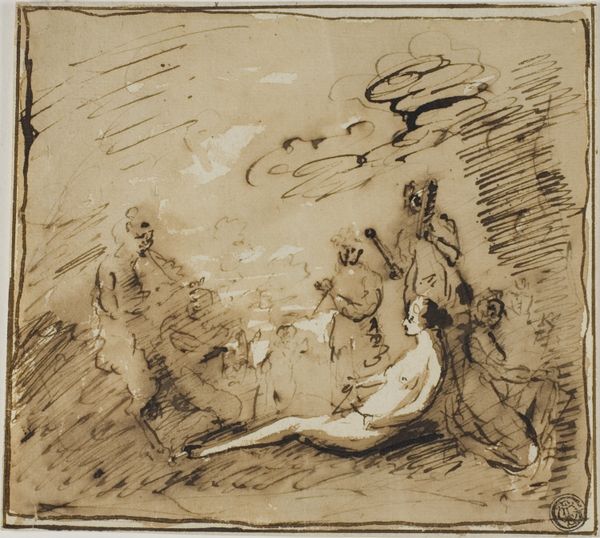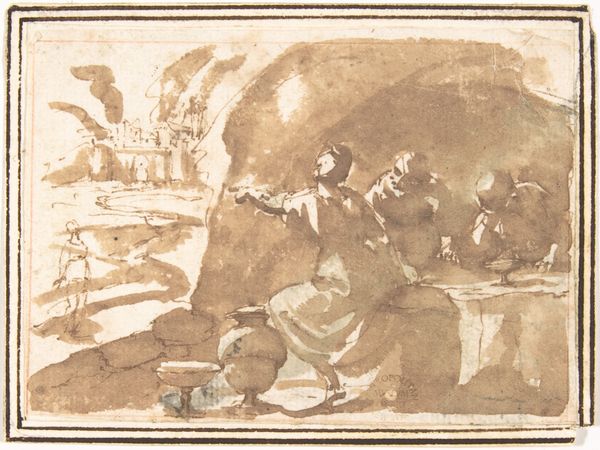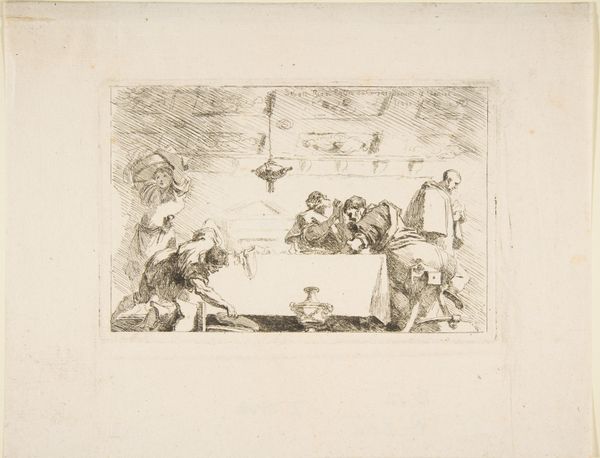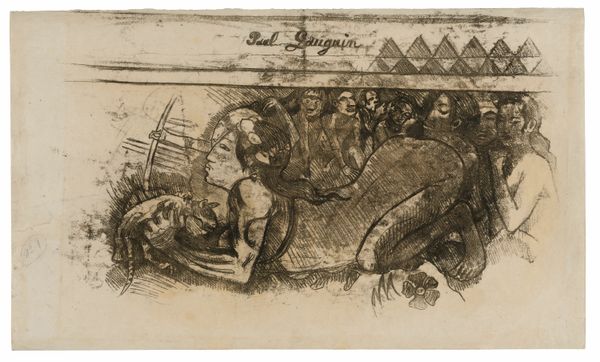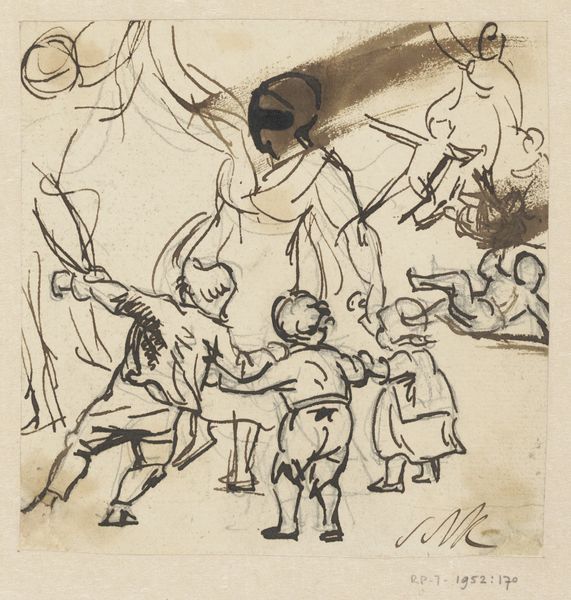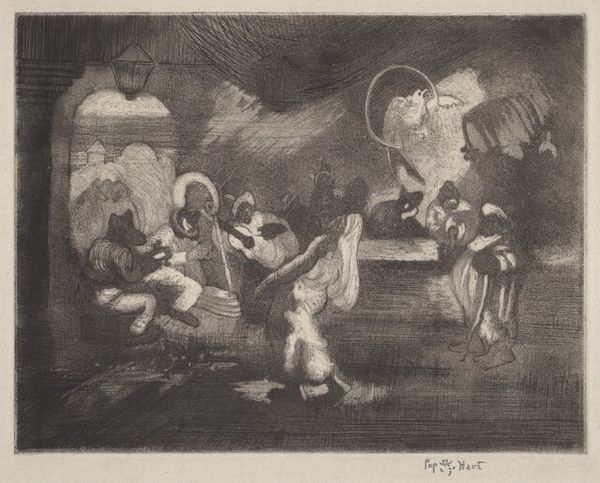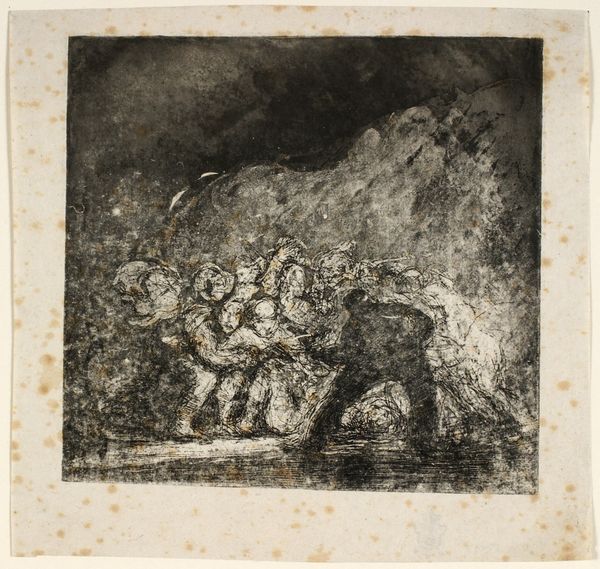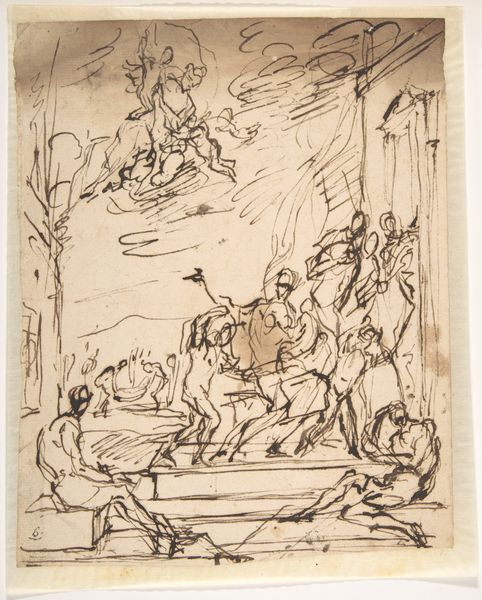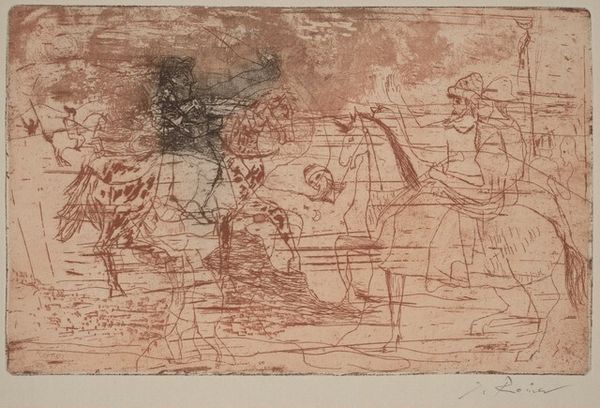
drawing, ink
#
drawing
#
ink drawing
#
narrative-art
#
baroque
#
figuration
#
ink
Dimensions: 3-11/16 x 5-5/16 in. (9.4 x 13.5 cm)
Copyright: Public Domain
Editor: We're looking at "The Death of Dido," an ink drawing by Francesco Allegrini, made sometime between 1624 and 1663. It’s currently housed at the Metropolitan Museum of Art. It's rendered in sepia tones and evokes such intense sorrow... What do you see in this piece beyond just the depiction of death? Curator: It is important to look at this piece through the lens of colonial narratives and gender roles. Dido's story, rooted in Virgil’s *Aeneid*, has often been used to justify Roman, and by extension, Western expansion and power. Here, we see Dido, a powerful queen, brought down by love and ultimately suicide when abandoned by Aeneas. How does Allegrini reinforce or challenge the established narrative of Dido's demise? Editor: I see the emphasis on the dramatic gestures of the surrounding figures, emphasizing the spectacle of her death and what looks like a descending figure perhaps representative of a God. So it's less about her agency, more about the event itself, right? Curator: Precisely. The figures surrounding Dido highlight a culture that exploits the emotional and physical vulnerability of a woman. Consider how the story, as visually presented by Allegrini, upholds a patriarchal view, where female power is contingent upon male validation. How does it feel seeing Dido framed this way? Editor: It's disheartening. Understanding the socio-political dimensions makes me question the heroic narrative of Aeneas. Is the celebration of Rome intrinsically tied to the subjugation of others, including women like Dido? Curator: Absolutely. By examining Allegrini’s piece, we are forced to confront these difficult questions about power, gender, and historical interpretation. It’s a mirror reflecting uncomfortable truths. Editor: I now see this artwork not just as an illustration, but as a powerful commentary on enduring social structures. Curator: Indeed, art is never neutral. It’s a record of our collective past, but also a tool for understanding our present and imagining a different future.
Comments
No comments
Be the first to comment and join the conversation on the ultimate creative platform.
